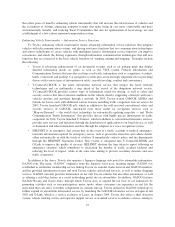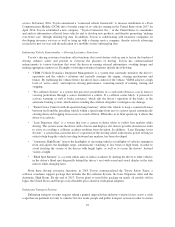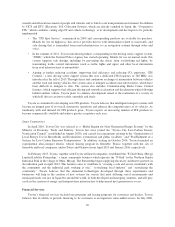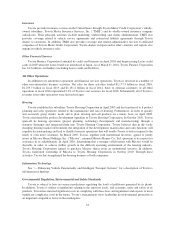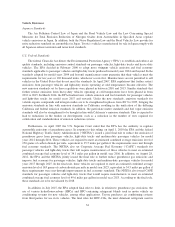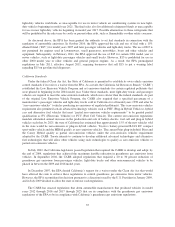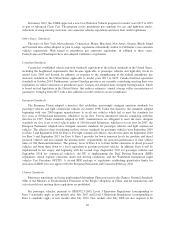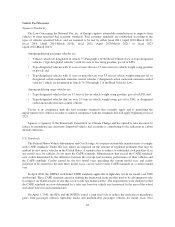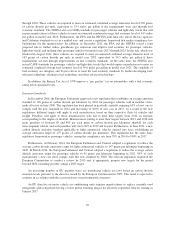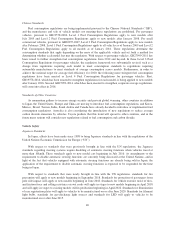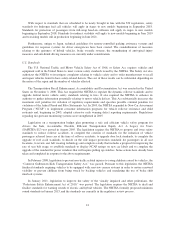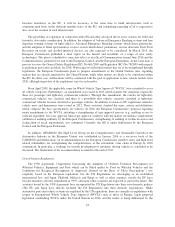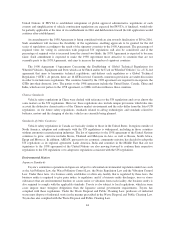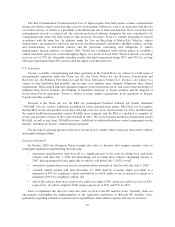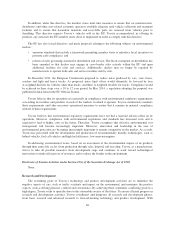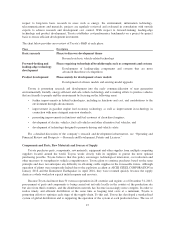Toyota 2015 Annual Report Download - page 42
Download and view the complete annual report
Please find page 42 of the 2015 Toyota annual report below. You can navigate through the pages in the report by either clicking on the pages listed below, or by using the keyword search tool below to find specific information within the annual report.equipped with on-board diagnostics. With respect to passenger vehicles, pursuant to GB18352.5-2013, Level 5
Emissions Regulations (corresponding to Euro 5 standards) are to be implemented throughout China for all
models that are sold and registered after January 2018.
For diesel-powered commercial vehicles, pursuant to GB17691-2005, new Level 3 Emissions Regulations
apply to models after January 2007. Although Level 4 Emissions Regulations were to apply to new models after
January 2010, and Level 5 Emissions Regulations were to apply to new models after January 2012, because the
infrastructure to supply sufficient diesel fuel meeting the Level 4 quality standards had yet to be put in place, the
implementation of the Level 4 Emissions Regulations for all models was postponed to July 2013. In connection
with such delay, the implementation of the Level 5 Emissions Regulations has been postponed from the original
plan and is now scheduled to be implemented from July 2017. For gasoline-powered commercial vehicles,
pursuant to GB14762-2008, Level 3 Emissions Regulations apply to new models after July 2009 and Level 4
Emissions Regulations apply to new models after July 2012. After the first day the regulation is implemented to a
new model, all new models released during the following one-year period also become subject to the regulation.
In addition, in some areas such as Beijing, Shanghai, Guangzhou and the Pearl River Delta region, the above
mentioned regulations were implemented several years earlier by regional environmental preservation authorities
with the authorization of the Chinese State Council. Cities with serious air pollution are increasingly exhibiting
tendencies to similarly implement Level 5 Emissions Regulations in advance of the rest of China.
China will also start implementing stricter diesel and gasoline fuel standards a year earlier than scheduled to
reduce vehicle emissions, pursuant to GB19147-2013 and GB17930-2013. The new Level 5 standards
(equivalent to Euro 5 standards) will be implemented in 11 provincial capitals in eastern China in January 2016,
and are now planned to be implemented nationwide in January 2017, as opposed to the previously announced
January 2018 implementation date. In connection with this, the Ministry of Environmental Protection and the
Ministry of Industry and Information Technology issued a notification regarding the implementation of the Level
5 standards, which will be implemented for gasoline-powered passenger vehicles in 11 provincial capitals in
eastern China from April 2016, for gasoline-powered passenger vehicles nationwide in China from January 2017
and for diesel passenger vehicles nationwide in China from January 2018.
Compliance with new and more stringent emissions and fuel standards will present significant technological
challenges to automobile manufacturers and will likely require significant expenditures. Examples of these
challenges include the development of advanced technologies, such as high performance batteries and catalytic
converters, as well as the development of alternative fuel technologies. Manufacturers that are unable to develop
commercially viable technologies within the time frames set by the new standards will lose their market share
and will be forced to decrease the number of types of vehicles and engines in their principal markets.
Standards of Other Countries
Countries other than Japan, the United States, Europe and China are also proactively introducing emissions
regulations. Many countries or regions such as Australia, Mexico, the Middle East, Taiwan and Hong Kong, as
well as countries in Eastern Europe and Asia, have considered or implemented emissions regulations.
Especially in India, the government accelerated the effective date of BS-6 (equivalent to EURO6) to 2020
due to the worsening air pollution problem and its Supreme Court suggested imposing a tax on sales of all diesel
passenger vehicles in the Delhi metropolitan area. Until the discussion on the new tax is settled, the registration
of diesel passenger vehicles larger than 2 liters is temporarily banned in the Delhi metropolitan area.
37


